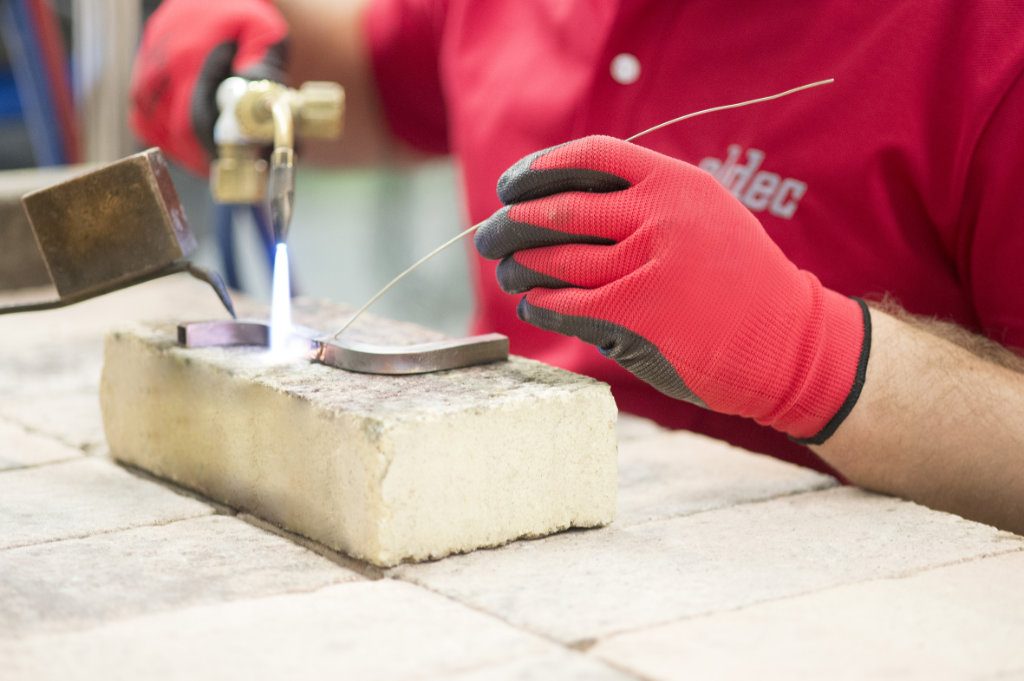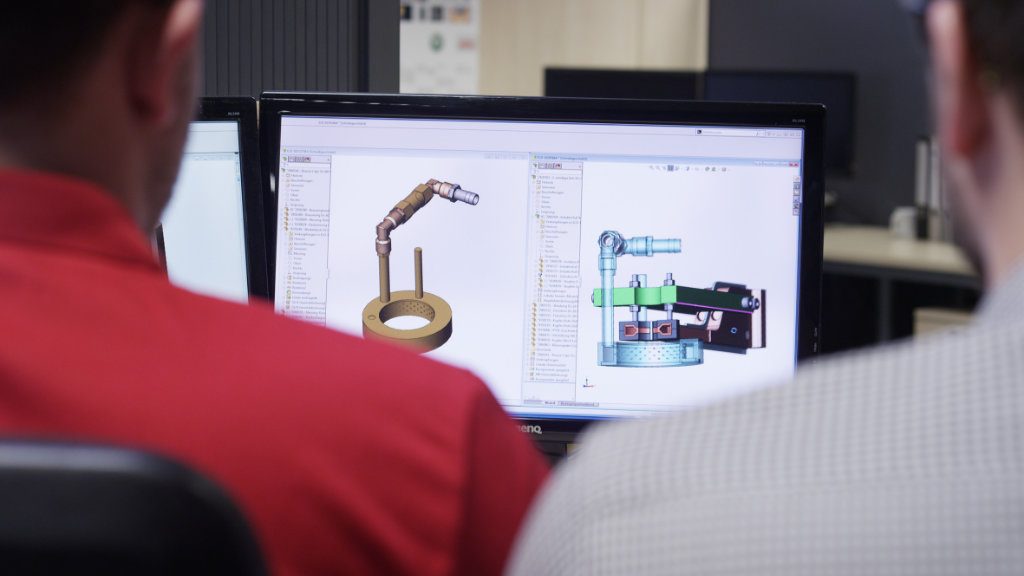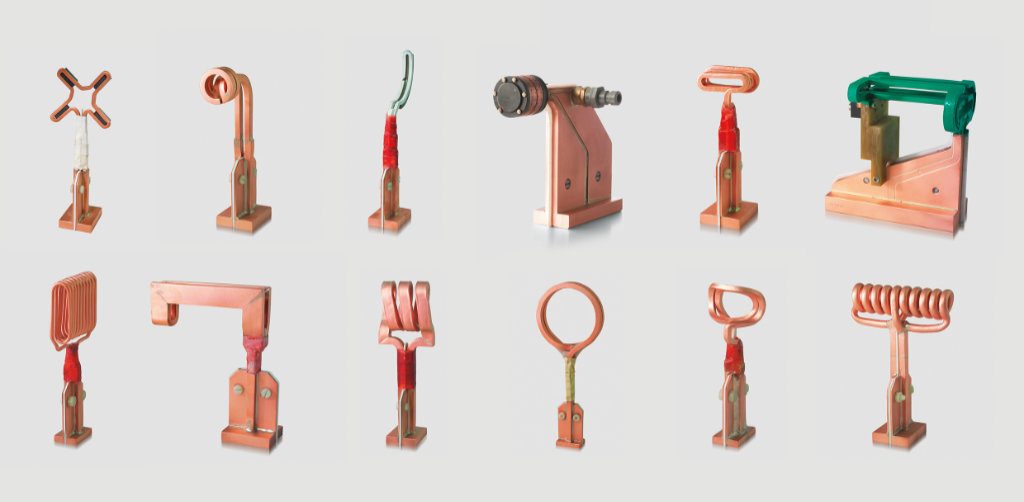Inductor building is a key growth sector for eldec for a combination of reasons. First, more and more companies — in industries such as automobile production or aerospace — are discovering the vast potential of induction heating. Increasingly complex parts are being heated, hardened, or annealed. Second, these developments call for specialized expertise in inductor building.
For more than 30 years, eldec has developed and built inductors that perfectly match the geometry of the workpiece.
Complex manufacturing process accurate to one tenth of a millimeter
Induction can be used on parts to heat, join, braze, harden, or even melt them. A critical component in these processes is the inductor. Its design decides the precision in heating a workpiece. This is why the key tool is manufactured with a precision of one tenth of a millimeter in the course of complex manufacturing processes.
Wide variety of inductor shapes
Consequently, the inductors used are as many and varied as the corresponding parts or components. For example, eldec produces ring inductors and shaped inductors that enclose the part being heated with millimeter precision. Rod inductors sit inside the part during the process, heating the metal from the inside out. Flat inductors are also frequently used, for example, in induction brazing. They heat large areas of the part surface evenly and simultaneously.
The EMAG subsidiary is now producing up to 1,000 inductors per year – and counting. The crucial quality that many customers put their trust in is the experience of our fitters and engineers. The complex manufacturing process for the inductor hinges on many minute details and cannot be automated. When brazing or assembling the inductor, every move has to be right.

Inductor manufacture is a demanding process that cannot be automated.
Development and manufacturing processes in inductor building
Customers submit a part drawing or a blank part. Application engineers then propose a production process. How is the induction process carried out in detail? What temperatures need to be reached? What is the power of the generator? What is the shape and size of the inductor?
Once these questions are answered, the design of the inductor starts with the aid of the latest 3D CAD software and CNC machine tools. The final result is tested on the real part. If the quality of the manufactured part isn’t 100 percent satisfactory, we make changes and rework the inductor on a milling center. For highly complex inductors, such as those used for induction hardening, the required precision may be a matter of a few tenths of a millimeter.

CAD workstation at eldec: Inductors are custom-designed on a computer.
New developments in inductor production – simulation and 3D printing
Latest developments in software make it possible to simulate the effect of an inductor on a PC. This combination of simulation and practical trials in the lab results in significantly faster inductor production and more precise induction processes.
The simulation software has also been extremely useful during the development of the new inductor generation, which uses generative manufacturing processes. Another innovation is the production of windings with selective laser sintering – an additive production process. Here, three-dimensional structures are made from a powdery raw material using a laser. This permits the realization of exceptionally complex inductor geometries.
Flexibility in inductor production
Another important aspect of eldec’s services is the high degree of flexibility offered in inductor design and production. Customers requiring a certain number of tools each year can enter into a framework agreement with the German company. eldec then produces the new inductor on a just-in-time basis. Users also have the option of producing additional inductors themselves.
Further information about inductors from eldec can be found here…

The geometry of the inductors is as varied as the parts to be made with them. Ring or shaped inductors enclose the heated part with millimeter precision.